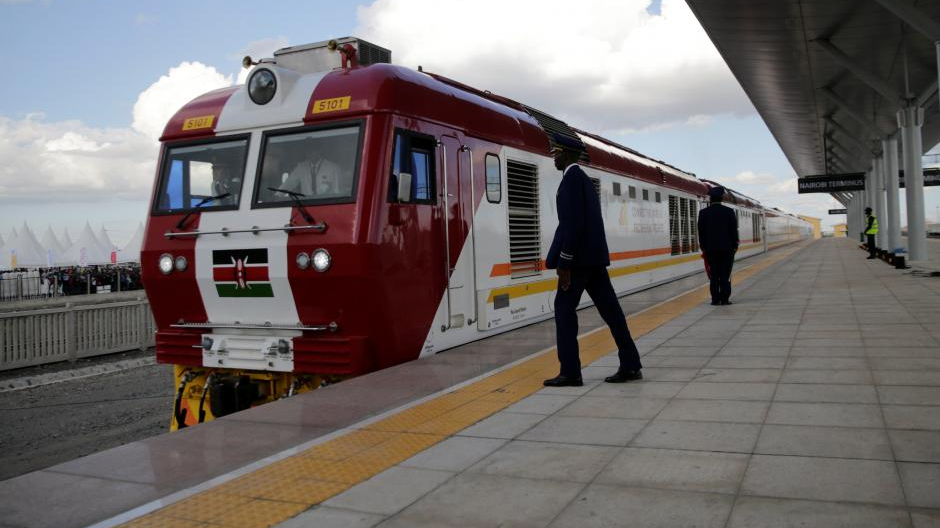
Kenya has allocated more than $1.8 Billion to modernize its transport system around its capital, Nairobi in a move aimed at decongesting the city and resolving time-consuming traffic snarl-ups. /VCG
Kenya has allocated more than $1.8 Billion to modernize its transport system around its capital, Nairobi in a move aimed at decongesting the city and resolving time-consuming traffic snarl-ups. /VCG
Kenya has allocated more than $1.8 Billion to modernize its transport system around its capital, Nairobi in a move aimed at decongesting the city and resolving time-consuming traffic snarl-ups.
The rehabilitated commuter rail is part of an elaborate master plan of an integrated commuter system within the city and its environs that also comprises the Bus Rapid Transit and non-motorized transport network
As CGTN's Ken Karuri reports, residents of Kenya's capital are set to enjoy commuting around the city through rail services following the rehabilitation and modernization of its commuter trains.
The renovation is one of the key efforts by Kenya's government to solve traffic snarl ups in Nairobi by decongesting the city which is ranked as one of the most difficult to commute on the continent due to the lack of a scheduled public transport system.
James Macharia, Transport Cabinet Secretary, Kenya submitted: "Congestion has caused this city billions and billions of shillings and so as we develop the city, as we look at the future of the Nairobi city, we have to make sure that we integrate the road transport and the rail system. The rail system as you know we are doing some major infrastructural work in terms of new projects, but as we do those things it is not enough, we have to have a rail system which then will take majority of the people in and outside the city of Nairobi."
Authorities say the process involves a rail master plan, which includes rehabilitating existing infrastructure and constructing new stations. Its part of the wider Nairobi Metropolitan Services Improvement Project that aims to modernize the region's most advanced capital.
"This has been a long journey, and the journey began a few years ago. We started by doing what is called a rail master plan. And it is what we are doing right now. It is the implementation of the rail masterplan. And the rail masterplan divided the process into two large portions. There was what we are calling the quick wings. The quick wings is leveraging what is already there. You can imagine that within just the Nairobi Metropolitan for phase one, we already have about 152km of rail that wasn't necessarily in good condition but the network is there. We have now gone and built 10 new stations within the metropolitan and now we have brought in Diesel Multiple Units," Charles Hinga Kenya's Principal Secretary, State Department for Housing and Urban Development said.
Kenya's government has set aside more than $1.8 billion towards the projects that will create a web of Bus Rapid Transport System, new railway trucks, bypasses and highways in a bid to reduce traffic congestion in the capital by half.
The Nairobi Central Station will serve as the nerve center of operations connecting to 10 stations in satellite towns.
"Every day, in average we move 30,000 to 40,000 passengers through this station. And every day we are operating a minimum of three trains in the morning, and a minimum of three trains in the evening, in all these routes. And what we are planning now, after renovation and rehabilitation of the stations that you saw, we expect in which every one hour that we will be having about 40,000 people exiting, and getting through this station within one to two hours. That number would translate from 30 or 40 to around almost 150,000 people per day and ultimately we are rusting that we will be moving 3 million passengers per month throng these stations."
A 2019 report by the Nairobi Metropolitan Area Transport Authority stated that vehicles stuck in traffic potentially cost East Africa's largest economy almost $1 billion a year in lost productivity.
Commuters spend an average travel time of almost an hour to navigate the city which has significantly impacted on their productivity.

